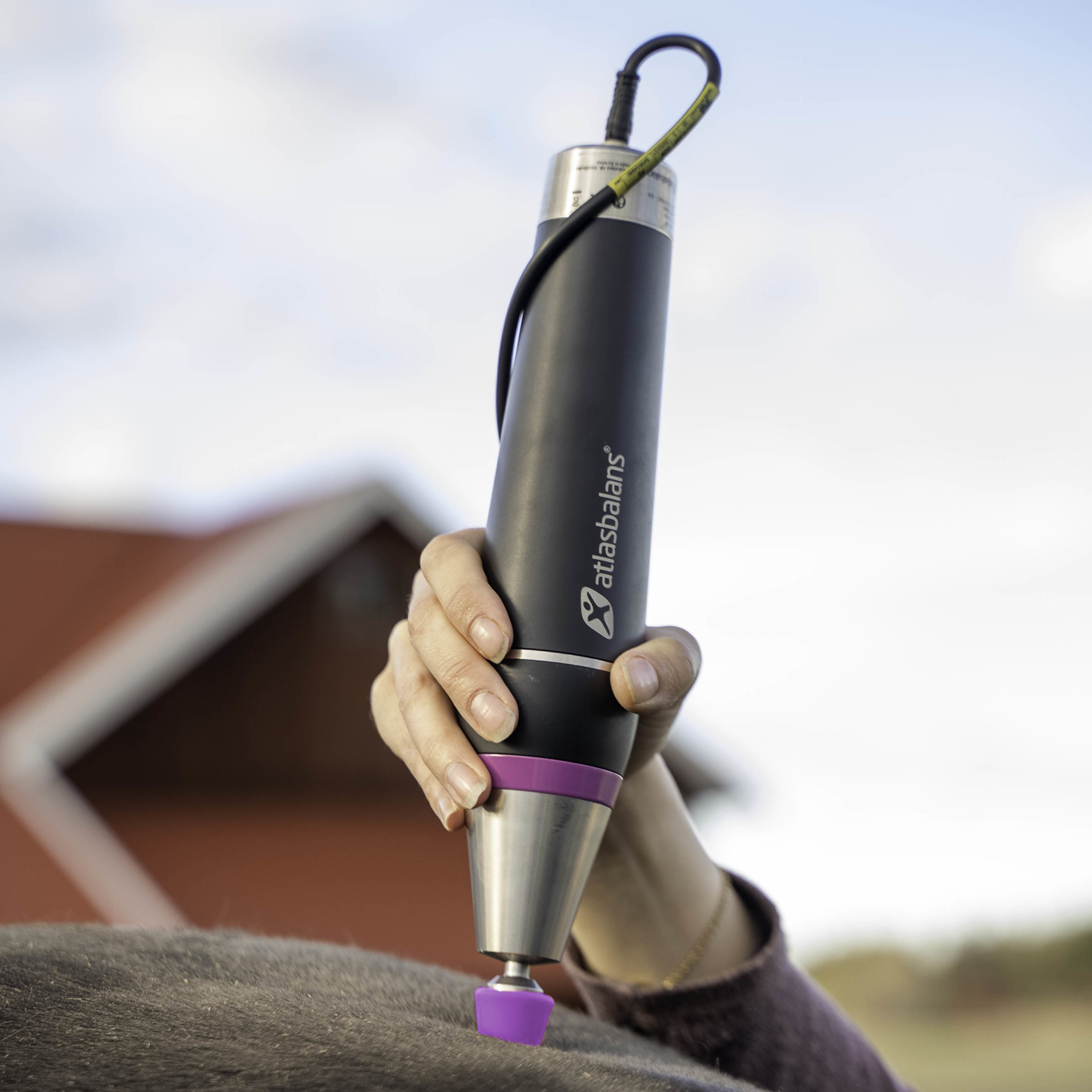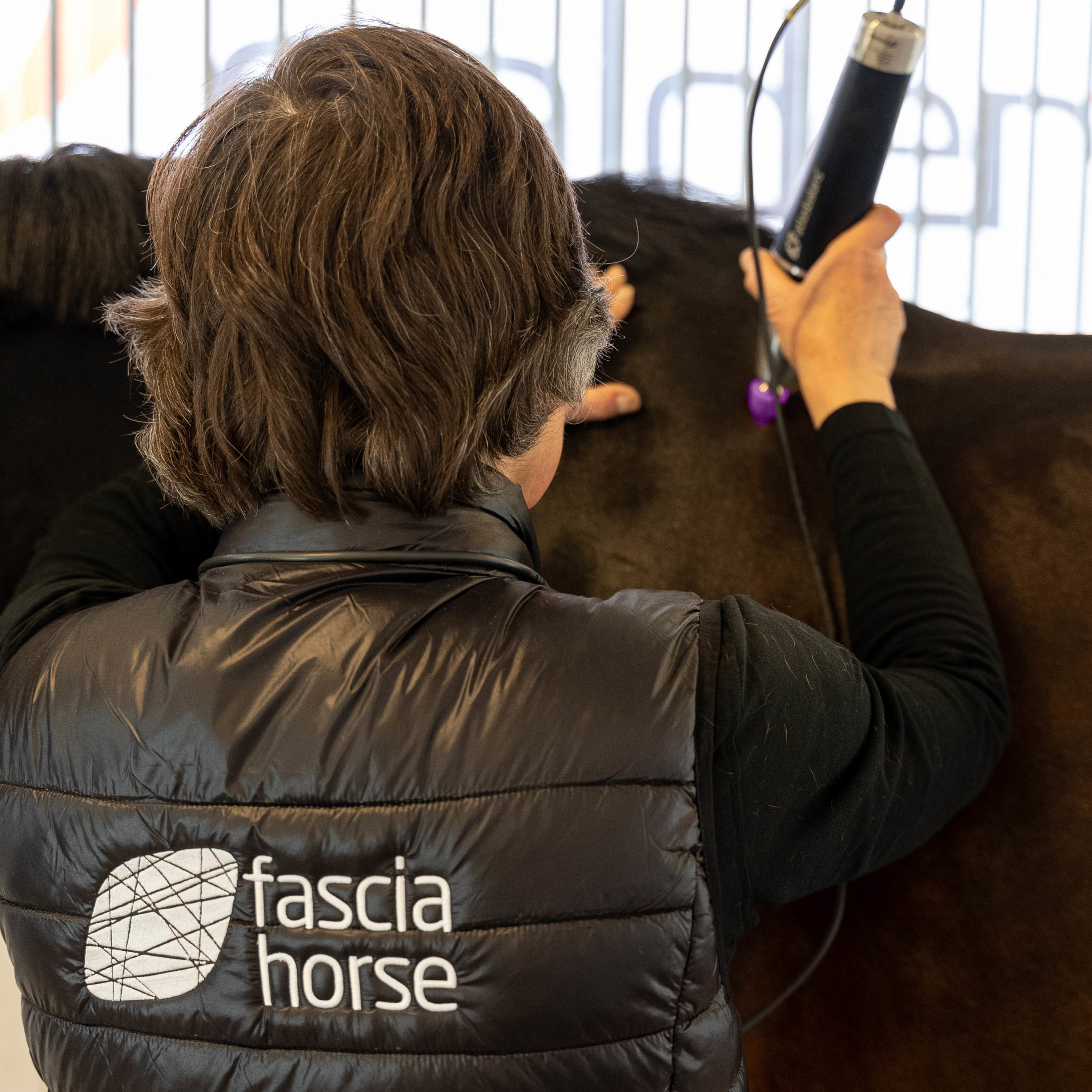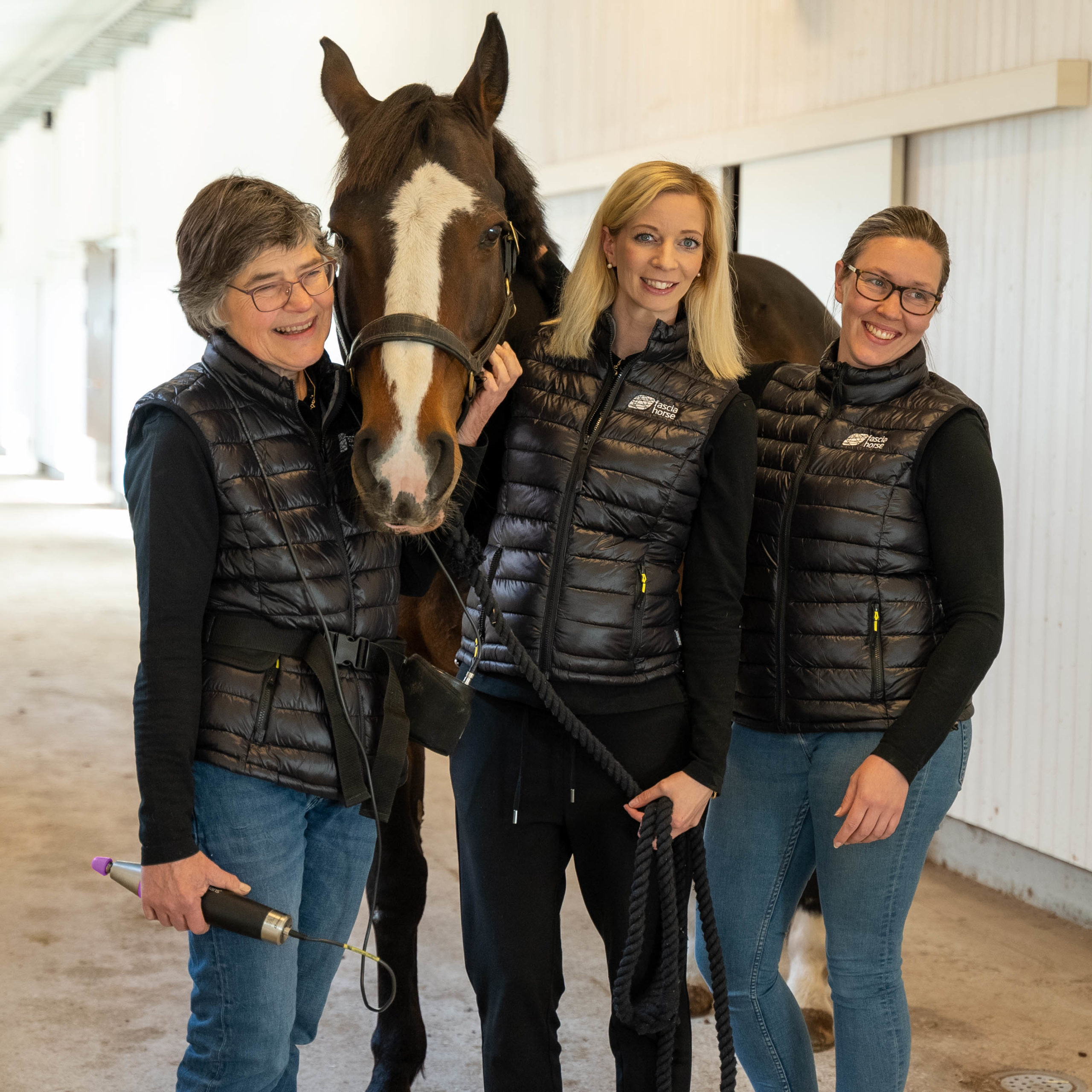What happens during the treatment and how do you treat the horse?
Swedish Fascia Therapist Märta Lindqvist has been treating horses using the Atlasbalans treatment tool since 2014.
In the fall of 2017 we asked her to write an article explaining what happens during the treatment along with some tips on how to treat horses with the machine.
A simple description of how I treat most horses. The basis is to palpate through the entire horse and create an understanding of where the horse has its deep tension. Is it unequal-sided, has it got a general tension that you need to relax first or another clear problem area?
Many horses have a general tension during their first treatment, which complicates the localization of deeper problems. That is why the horse’s problem areas can be clearer towards the end of its first treatment or during the palpation when the superficial tension has released.
A flexible muscle feels soft and can be moved from side to side and be moved “from the bones”. The more tense a muscle is, the harder it is to palpate and differentiate from other muscles.
Tension does not have to hurt. Often a tense body part that is the cause of the problem, is “silent”, i.e. the horse will not react with pain or discomfort there. But another part may be sore and overexerted because of the “silent” tense area without its normal mobility.
The withers are often a good place to start. But sometimes the least sensitive hind legs are the best place to start. In what order you treat is entirely up to the horse. Occasionally it is advisable to leave a sore/firm area, go over to another part, to then return after a bit when the tissue has had time to react and continuing is easier.
One rule is that if it feels loose and well, it’s done. The result will be better if you treat the parts with tension more and put less time and effort on the healthy parts. Observe, touch, feel and follow your instinct. That is way better than working schematically, with the same time and pressure across the entire body.
Treatment of the head and neck
I basically never treat the head and neck in front of the atlas vertebra. And not in the lymph area behind the ganache and jugular. I also do not want to put pressure on the transverse processes on the neck vertebrae as they are sharp and the thin neck musculature covering them could get damaged. If the temples are sore it is often because of tooth or a problem with the bite and is something that should be addressed in another way. Treatment on the temples can easily become too powerful and cause a headache.
The meatier part of the masseter muscle can be treated when needed, where the marking is drawn there is enough soft tissue between the machine and the bone/teeth. Although one should be very careful while treating here. This is no specific spot that I treat routinely, but only when there seems to be a specific need.
The top line of the neck, all the way back to the withers and shoulder blade is treated properly. Behind the transverse process on the atlas vertebra, there is often tension which can affect remission and posture.
From every vertebrae and upward, you can go in deep and loosen short muscles inwards/upwards. The machine can be worked in underneath the front of the scapula, either when the horse is shifting its weight to the other front leg or by lifting the front leg which you are working on.
The lower neck can be treated without risk of putting pressure on the neck vertebrae down by the shoulder. The area in front of the withers high up, is often treated well.
It is a good sign if the horse “helps out” by lowering its neck. Then the machine reaches in better and tension is relaxed more efficiently deep down, than if the horse is raising its head and pushing back. “The triangle” in the middle of the neck is often very tense and the entire suspension mechanism in the front of the horse is aided by it being soft.
Many times, the neck is very tense and will react by starting to shake uncontrollably by treating directly on it. Here you may need to back away and treat from the outside in towards the tense area. The horse can get spooked by the shivering/muscle contractions that arise. Often, they are softened if you hold your free hand close to the machine and soothe with a light pressure where you had planned to put the machine and put it down very slowly.
Treatment of the shoulder
The scapula spine in the middle of the shoulder blade is a significant bony ridge, which should not be treated directly. Even the point of shoulder is lacking in mass and the machine can be unnecessarily hard on that part. The other parts of the shoulder are generally covered in enough muscle to be treated thoroughly with a bit of elbow grease and work through the layers without risk.
As always you need to adapt the pressure to the status of the tissue and how the horse reacts. As one layer releases, you can reach the next one.
The tissue on top of the shoulder blade is often thin and very firm. There it can feel like treating on bone. A careful pressure, feeling with the free hand for what is happening, and careful positioning of the machine is required when treating here.
The withers is an area well suited for treatment. Also, the biceps can cause pressure on the point of shoulder if the muscle is short. An inflammation in the shoulder joint or an inflamed bursa under the bicep tendon may be the cause. Treating directly on the point of shoulder is unnecessarily painful and the important thing is to release the pressure, i.e. treating the muscle that is pulling.
I usually think that I work the resistance with a reasonable pressure to get the next layer treated well. So that the vibrations do not just work superficially but reach down and affect the deeper tension, which is most often the cause of inhibited movement.
In a soft body you can palpate the skeleton through the musculature and connective tissue. With time you learn to find tension and feel as it releases through the machine and how it works and how it feels in the hand. The entirely covered area behind the point of shoulder is the shortest part of the triceps. It is important to reach it. Treat thoroughly close to large joints as the deep stabilising musculature affects movement the most and is the hardest to reach.
Treatment of the legs
In the middle of the outside of the forearm there is a bony prominence that you should avoid treating. Also, all other parts where there is only skin, tendons, ligaments and bone. I.e. no mass which can propagate the vibrations.
I treat hooves, flexor tendons and sesamoid bones etc with the leg lifted, so that the movement has someplace to go and the machine does not bounce against bone and risk damaging skin or ligament in between.
Treat the thick part of the muscle of the flexor tendons thoroughly. It is easiest with the leg lifted so the muscle relaxes a bit and can be moved/stretched. If the front of the carpal joints a little “meaty” and swollen they can be treated with a standing leg.
Treatment of the back/torso
Here I avoid putting the machine directly on the rib joints which are on the lateral side of longissimus. You can clearly feel with your fingers where they are and above them you can treat freely with an appropriate pressure to what the back can tolerate.
I do not routinely treat on or between the ribs. Avoid treating on the hip bone and directly on the sacrum and spinous processes. Hold the machine where there is soft tissue.
For soreness – start at the other end and adjust the pressure.
The back can be worked both close to the spinous processes and on the lateral side with a pressure on an angle in towards the spine.
Be thorough with the lateral parts of the lumbar region as it often prevents a proper flexion of the back and pelvic area. When needed the chest musculature can be treated.
Treatment of the lower back & thigh
As before it is important to avoid superficial bones and joints. Work through the entire back thoroughly. Close to the sacrum and all the way down between the hip joint and the iliac crest. The back thighs can be treated from behind or somewhat from the inside. Be thorough with the knee musculature.
The hock is treated as the marking shows. Also, the back part of the hock that merges into the achilleas tendon.
The back of the horse can be very sore and affect nerves. Working away a little at a time and being thorough with palpating and feeling for strings and tension.
For full effect stretching and manual massage can be used after Swedish Fascia Vibes to help muscle fibres and fascia release entirely.



















